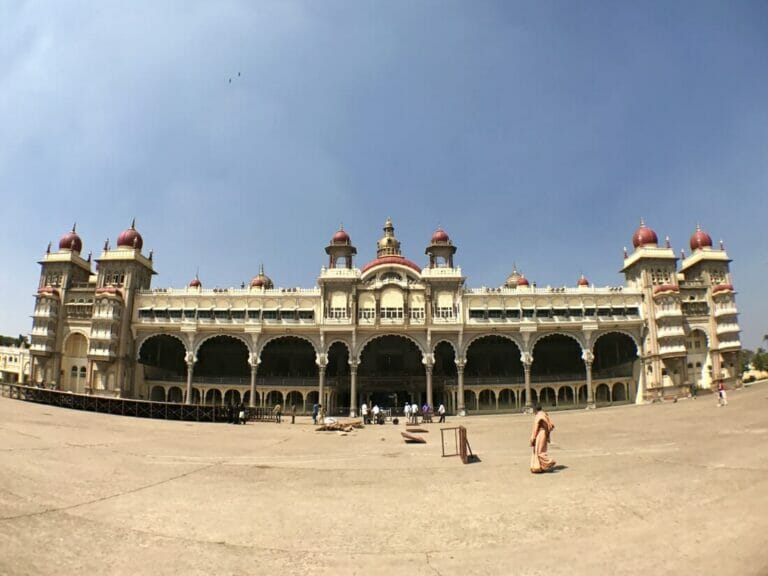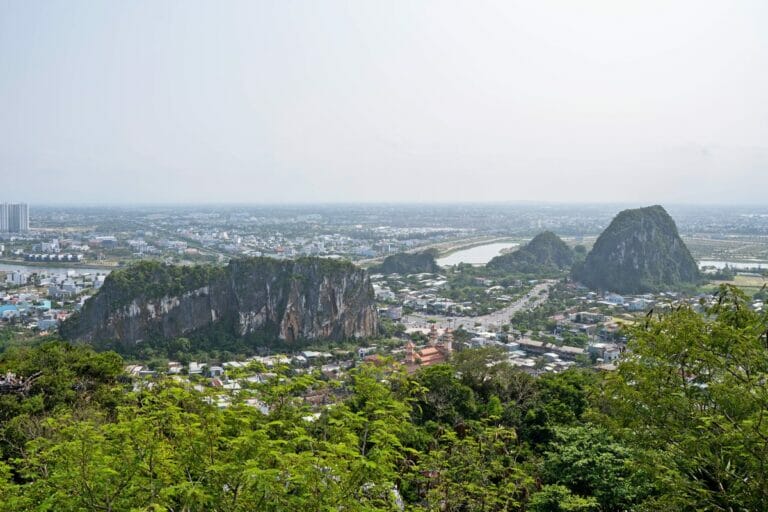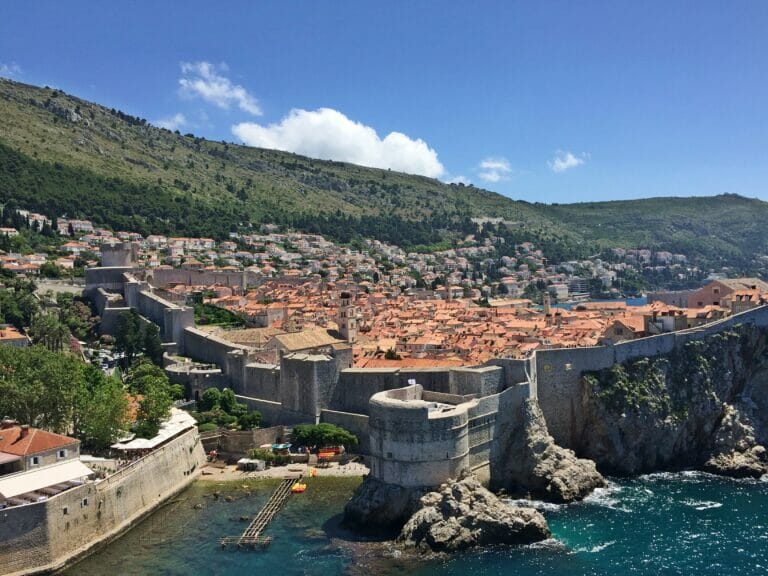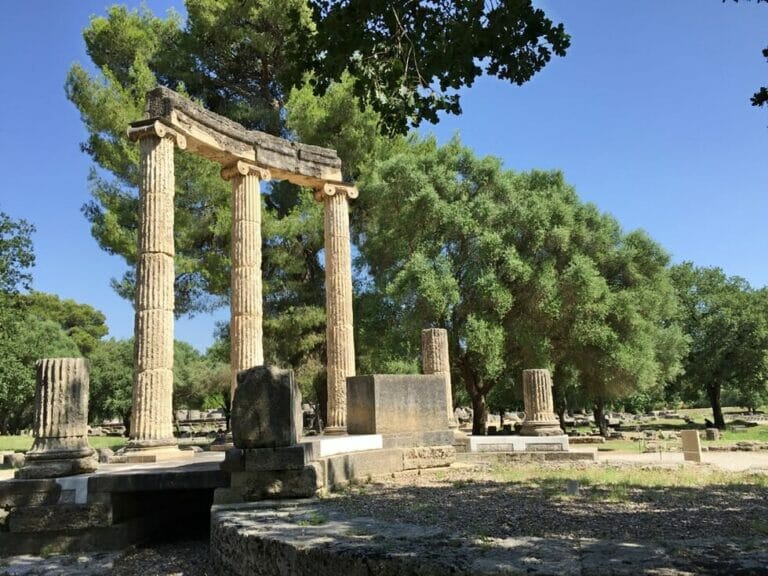Releasing Turtles in Bali: Is It Ethical?
Want to take part in releasing baby turtles in Bali ethically? This is how you can support a NGO and local community group that helps to protect and save turtles in Bali! Read on for my first-hand experience participating in a sea turtle release in Bali.

The Kuta Sea Turtle Conservation Center in front of Kuta Beach is a local community group supported by the Bali Sea Turtle Society that collects and protects sea turtle eggs from local beaches and releases them once they have hatched.
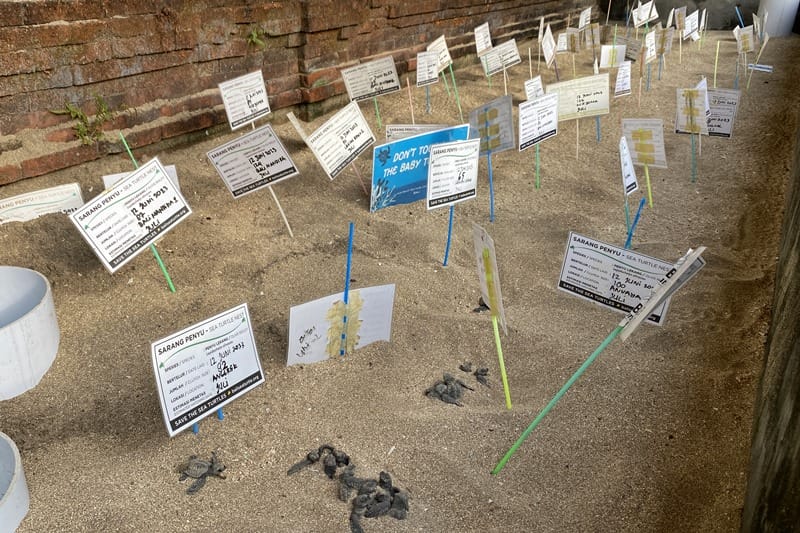
During the sea turtle hatching season the Kuta Sea Turtle Conservation Center hosts baby sea turtle release events on the beach, and allows visitors and tourists to participate to help send up to a hundred (sometimes more) little waddling turtles back into the ocean!

Wondering where to see turtles in Bali responsibly? Here is what you need to know and my first-hand experience and thoughts on releasing baby turtles in Bali.
You may also like: First time to Bali? Here is my easy 2 week Bali itinerary to help you plan your travels
What is the Kuta Sea Turtle Conservation Center and why is it necessary in the first place?

Founded in 2001 by I Wayan Wiradnyana, a Balinese local, the Bali Sea Turtle Society in engages in community education and campaigning projects. Where it is perhaps most visible for visitors to Bali is its work in turtle nest protection. It supports the local community group, the Kuta Beach Sea Turtle Conservation Society, to relocate sea turtle eggs (mostly Olive Ridley) on local beaches and bring them to a protected hatchery.
This is done to protect the eggs from heavy foot traffic, protect them from dogs and other predators, secure them from traders who smuggle them for turtle meat and their shells, as well as natural threats such as erosion and high tides. During the west monsoon season Bali Sea Turtle Society also rescues sea turtles that have been stranded on the beach. Read more about their work here and here.

Indonesia’s waters are home to six out of seven of the world’s sea turtle species, all of which are endangered. As one of the top tourism destinations in the world, visitors flock to the island to surf its rolling waves, sip on healthy smoothies, explore temples and waterfalls and of course – get up close and personal with animals.
Unfortunately, according to reports produced by World Animal Protection in 2017 and updated again in 2023 following a re-investigation, despite the fact that many venues in Bali claim to be “turtle sanctuaries”, welfare conditions for wildlife in entertainment in Bali and Lombok are and remain inadequate. [Source]

Their investigation shows that many captive turtles are kept in “pens” with shallow water which makes it difficult for the turtles to move away from tourists who try to touch and feed them, and as a result show signs of psychological distress when being picked up and handled. There are also cases where tourists may drop turtles and injure them, or contaminate turtles with diseases such as fungal infections.
Turtles are wild animals. They are not for our entertainment. No wild animal should live its life in a concrete pen being passed between tourists for hours on end.
World Animal Protection
If you want to help save sea turtles in Bali, there are only a small handful of places where you can do so ethically. This is one of them!
Releasing baby turtles in Bali

Here is what to expect from a visit to the Kuta Sea Turtle Conservation Center supported by the Bali Sea Turtle Society, and how to release baby sea turtles in Bali. The Kuta Sea Turtle Conservation Center is located on Kuta Beach, near the Hard Rock Hotel. There is a huge sea turtle sculpture out front, which makes it hard to miss!

Baby sea turtle releases take place in the afternoon, usually at 4-4:30 PM just before dusk.
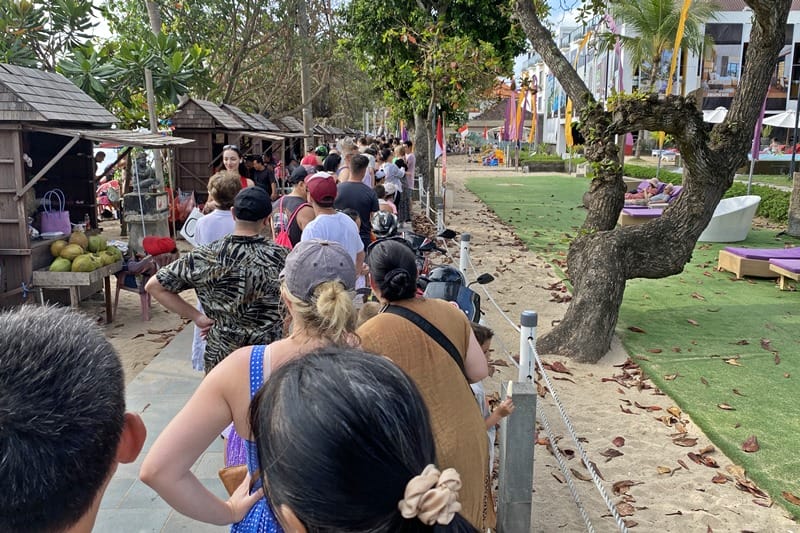
You therefore need to get there and start queuing at around 3 PM as the lines can be very, very long (especially in July and August).
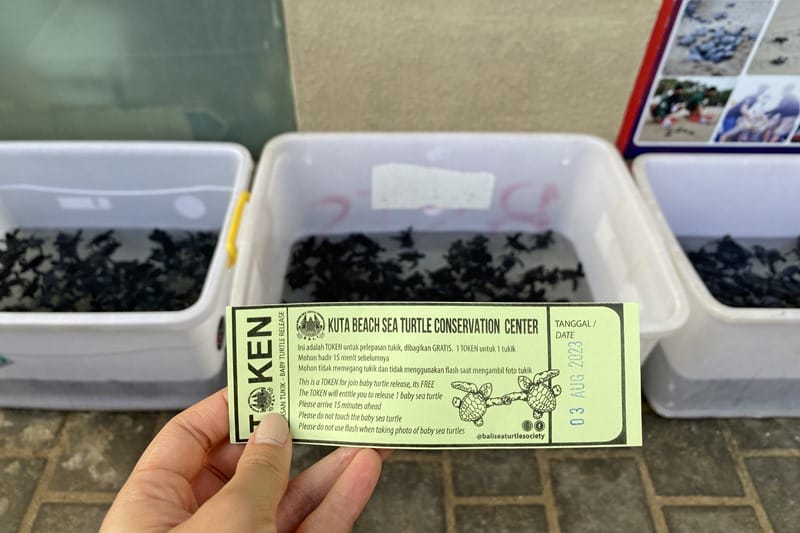
Once you have finally made it to the front of the line, grab a ticket (get one per person) and take a look around the small facility where there are some unhatched nests. It is usually very crowded, but just before 4 PM someone from the organization hops on the megaphone to explain the procedures and rules.
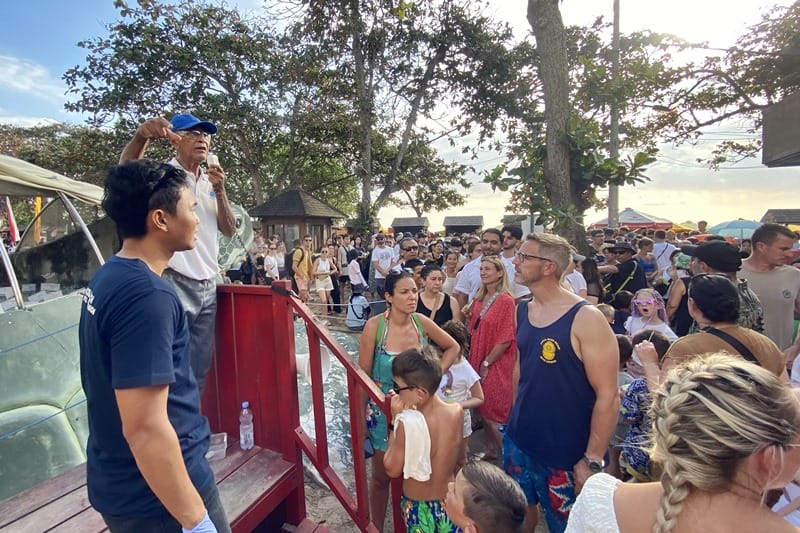
The organized turtle releases in Bali hosted by Kuta Sea Turtle Conservation Center follows important best practices which include no handling of the turtles, no flash photography, no loud noises and no blocking the turtles’ path to the ocean. As the turtles crawl closer to the ocean you are asked to remain crouched low behind them.

Just before 4 PM, the staff will instruct the crowd to start queuing up (again) to collect a small plastic tupperware container and collect one baby turtle per ticket.
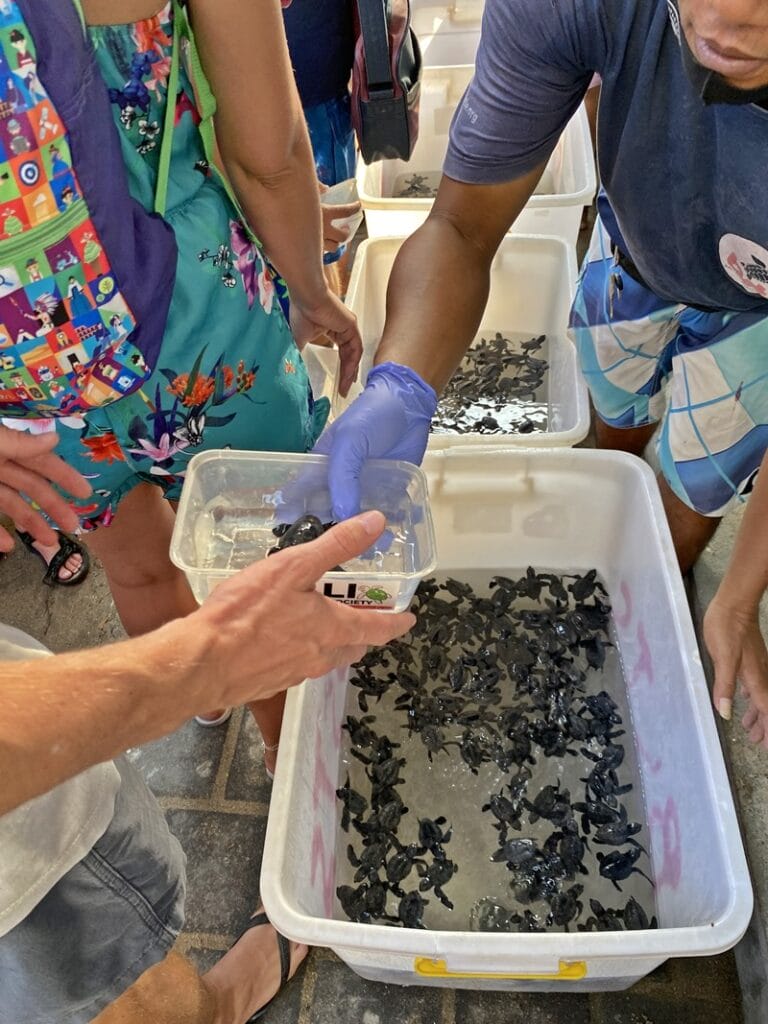
As the turtles are usually quite active and may try to climb out, you can use your hand to cover the container to stop them from falling out before getting to the beach.

You are then guided towards the release zone on Kuta Beach, which is marked by a long strand of rope – this is the line that participants are asked not to cross.

Once everyone has arrived (which can take absolutely ages), the organizer will announce that it is time for everyone to crouch down and gently tip the baby sea turtle onto the sand – then you simply let nature do its thing!

The turtles may get swept back onto the beach by the waves, but there are usually a few volunteers (who are wearing gloves) who pick them up to guide them back in the right direction – you should not pick up baby sea turtles with your bare hands. You can then return the plastic container to one of the volunteers as well.

Watching a hundred baby sea turtles waddle into the water is a real sight to behold. Despite the long wait times, we found it to be a very special experience in Bali.
When is the Bali sea turtle release held?

The best time to release sea turtles in Bali is during the hatching season from April to October (the nesting season lasts from March to September). During the peak Bali travel months between July to August there is usually a scheduled release every 1-2 days on Kuta Beach in the late afternoons (chances of survival are increased when releases are held in low-light conditions).
However, there is no fixed turtle release schedule because it depends on when the eggs hatch – usually on the same day as hatching to maximize their chances of survival in the wild.
The only way to find out if there is a scheduled release is on the morning of – follow Bali Sea Turtle Society on Facebook or Instagram for the daily announcements, which are made at approximately 9-10 AM on the day of the Bali baby sea turtle release event. You can watch this video for more details.
How do you book the Bali turtle release?
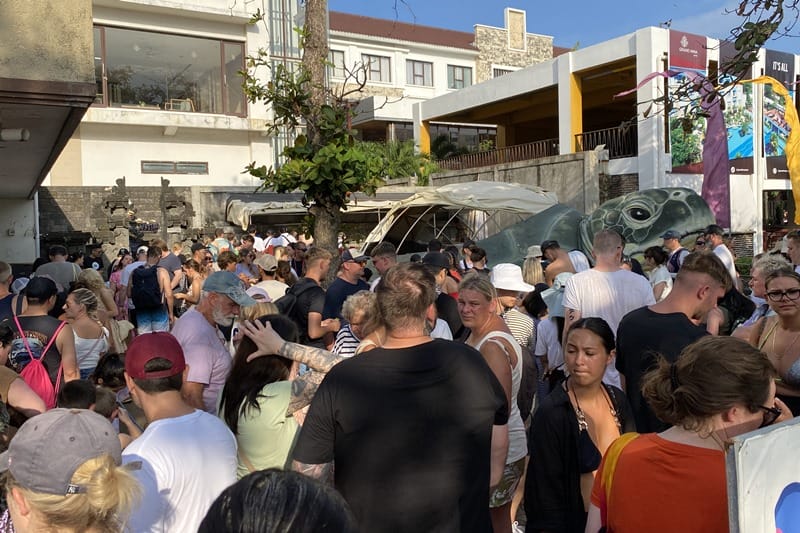
You can’t book because there is no fixed schedule – it wholly depends on when the eggs hatch! You simply have to show up at 3-4 PM on the day of a scheduled release and get in line.
Make sure you set aside ample travel time to get to Kuta from where ever you are staying. It can take more than an hour to travel from Kuta from Canggu and Sanur, and more than two hours if you are heading over from Ubud or Uluwatu because of heavy traffic.
If you are traveling to Bali with young children, as the line can be very long, one parent may want to take the kid(s) down to the beach while the other stands in line.
It does not cost any money to participate in the Bali baby turtle release as the events are donations-based. We donated about 100,000 IDR (about AU$10 or US$7) per person, but there is no fixed amount that you are required to contribute.
Is releasing a baby sea turtle in Bali ethical?

Ideally, there would be no human intervention at all and sea turtle nests on the beach are left alone. But that’s unlikely seeing that Bali receives approximately 5 million visitors a year and beaches become more and more developed with each year that goes by.

Unfortunately, even with the protective measures taken with nests and eggs only 1 in 1000 baby turtles is expected to make it to adulthood due to predators and marine pollution.
From what I personally witnessed taking part in a Kuta Beach Sea Turtle Conservation Center-hosted baby turtle release, the vast majority of people followed instructions and best practices and did not touch the baby turtles, no one used flash photography and most people did not block the turtles’ path to the ocean.
Where it went a little pear-shaped is when turtles started to get washed back onto the shoreline, and people started moving beyond the line and in front of the turtles. Given that there are hundreds of people and only a handful of volunteers, crowd control is almost impossible.
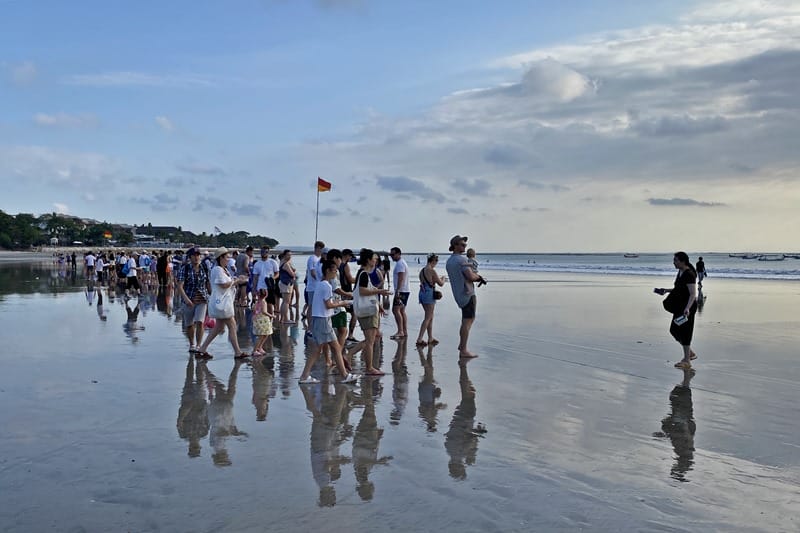
With the volume of people, there was also a lot of waiting around, from queueing to get a ticket, to queueing to pick up a container and baby turtle, and then waiting for the final few people to slowly make their way down to the release zone.
Though we started waiting in line at 4 PM and collected the turtles at about 4:30 PM, we didn’t end up actually releasing the baby turtles until about 5:10 PM because we had to wait for the stragglers and there seemed to be little urgency getting the slow-movers and late-comers to move along. While we were standing around we had to try to keep the baby turtles in the containers and not let them crawl and fall out – this seems like a lot of wasted energy that they could have used to crawl and swim into the ocean.
I don’t know what the solution is. Could participant numbers be limited or an online ticketing system be implemented? If they implement participant limits people will be left disappointed and leave negative reviews on TripAdvisor (which is already happening as people don’t do their research and go during the wrong time of year or when there is no scheduled release).
Could the turtle release be more orderly and less chaotic? Probably. But with so many people it almost comes with the territory and crowd management is easier said than done; the fact is, we don’t know the challenges that animal welfare groups and non-profit organizations face behind the scenes. I should also note that the crowds and waiting times are likely far more manageable during the off-peak travel season – we took part in releasing sea turtles in Bali in August, the absolute pinnacle of the peak travel season for the island. Your experience may differ if you visit in say, May or October.

In the long run, Kuta Beach is one of the busiest and most crowded beaches in Bali, and many female turtles tend to return to the same beach (or a different beach in the same region) they were born at to nest. Ultimately, perhaps one day in the future it may become unsustainable to continue releasing turtles back into the sea in Kuta. It does appear that the Bali Sea Turtle Society also partners with hotels around the island to occasionally release turtles in other areas like Nusa Dua.
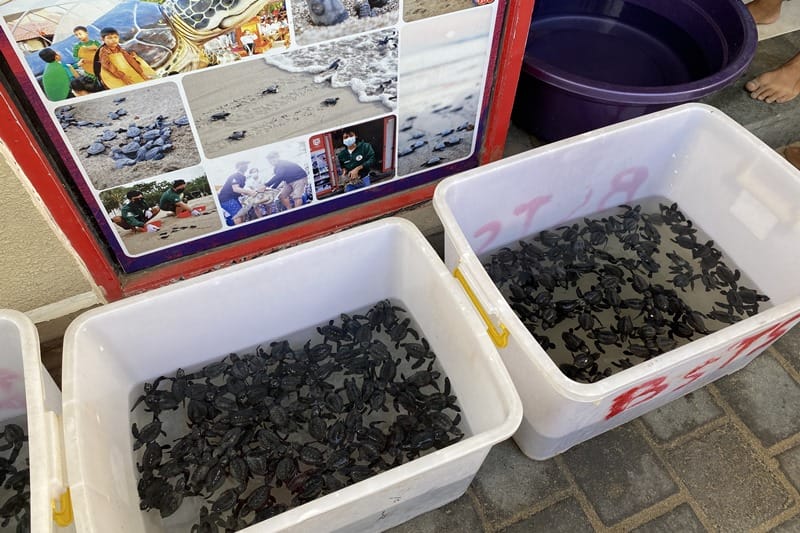
In fact, according to this post by Dr. Nikki Savvides who has a PhD focusing on volunteer tourism and conducted research with the Bali Sea Turtle Society: “It was clear that the impact of tourists and tourism development on Kuta Beach was devastating for turtles. Human activity on the beach was so disruptive that it had reduced the number of sea turtle species visiting the beach from six to one. In addition to Olive Ridley turtles, Loggerhead, Green, Hawksbill, Flatback, and Leatherback sea turtles once nested at the beach. Today, those five species appear to have been dissuaded from nesting due to the busy nature of this environment.”

At the end of the day, the turtle conservation work that the Kuta Beach Sea Turtle Conservation Center and Bali Sea Turtle Society are doing is incredibly commendable, and it’s easy to judge and speculate how things could be improved. By visiting the Kuta Beach Sea Turtle Conservation Center, myself and many others left more aware and slightly more educated about the plight of sea turtles in Bali and around the world. For those traveling with young children to Bali, it is a great way to expose the next generation to the concepts of animal welfare, environmental protection and conservation – and make memories along the way.
If you want to get up close and personal with baby turtles in Bali, I recommend visiting the Kuta Beach Sea Turtle Conservation Center supported by the Bali Sea Turtle Society, and joining a turtle release on Kuta Beach rather than visiting one of the “turtle farms” on the beachfront. Adult turtles at these so-called sanctuaries are often kept in captivity in sub-par living conditions, and usually you can pay to hold, photography and release baby turtles at any time during the day without much care for their welfare and survival.
Other places in Bali where you can see baby sea turtles
We also considered visiting the WWF-partnered Turtle Conservation And Education Center on Serangan Island near Sanur (about 30 minutes from Denpasar). Founded in 2006, the center has played a big role in sea turtle conservation in Bali and decreasing the illegal turtle trade on the island. Among the work it does, It also provides specimens for ceremonies in consultation with Hindu priests, but everything is strictly regulated and the turtles may not be harmed. Read more about TCEC here and here.
Visitors are allowed to hold and release baby turtles for an extra charge, however entry is donation-based. I cannot speak from personal experience about the TCEC, so I encourage you to do your own research and due diligence.
According to World Animal Protection, this is what they had to say (page 24) about the Turtle Conservation and Education Center on Serangan Island:
Two venues primarily focused on rescue and rehabilitation centres for sea turtles on Bali were also visited: the Turtle Conservation and Education Centre and Saba Asri Sea Turtle Conservation. These did not allow direct contact with the turtles during visitation, although according to details provided by staff, minimal handling happens when hatchlings are released to the sea. While there are guidelines and hygiene protocols in place to theoretically make the release no more stressful to the hatchlings than if a staff member were doing it, World Animal Protection does not advocate the handling of wild animals by non-professionals.
These venues still represent better welfare options for tourists to see turtles and contribute more directly to their conservation, without supporting demand for captive wildlife in entertainment venues. However, improvements to ensure the best chance of survival for the hatchlings, including releasing from quiet beaches at night and staff-only handling, would be recommended.
Where to stay in Bali
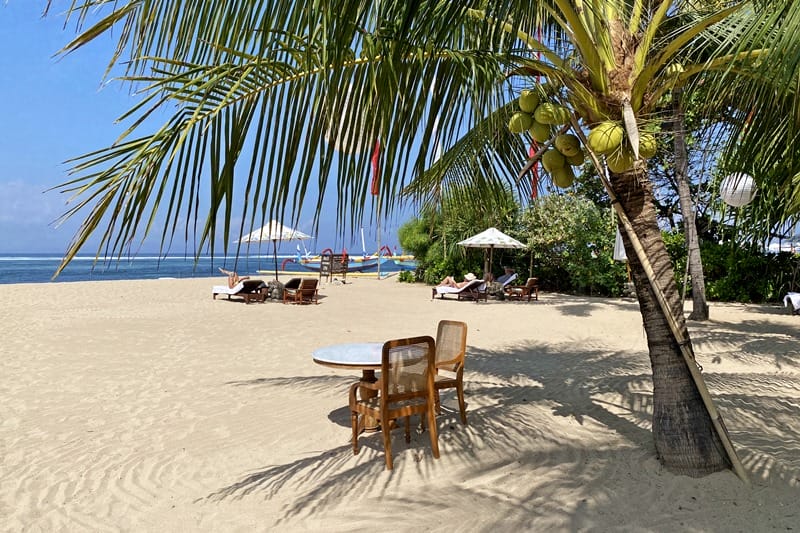
If you are planning a day trip to release baby turtles in Kuta, you have a few options for where to stay including Kuta itself, Seminyak, Canggu, Sanur or Nusa Dua. Any further than this and you’d need to be prepared for a long drive.
I recommend contacting Sudewa/Ani (Whatsapp at +62 819 9845 3366) or Wayan (Whatsapp at +62 813 3837 4919) for your day trips and airport pick ups/drop offs in Bali. Both are based in Denpasar and can pick you up from your hotel and drop you off in Kuta, wait until the turtle release is over and pick you up to take you to dinner or back to your hotel.
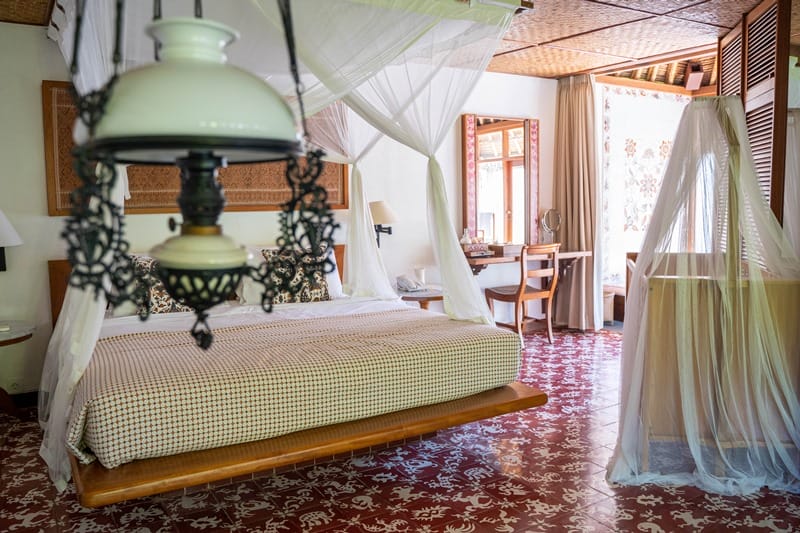
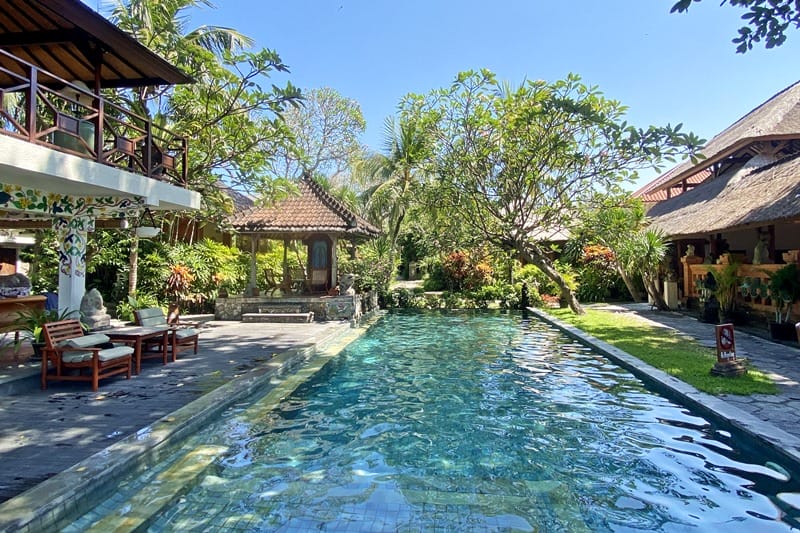
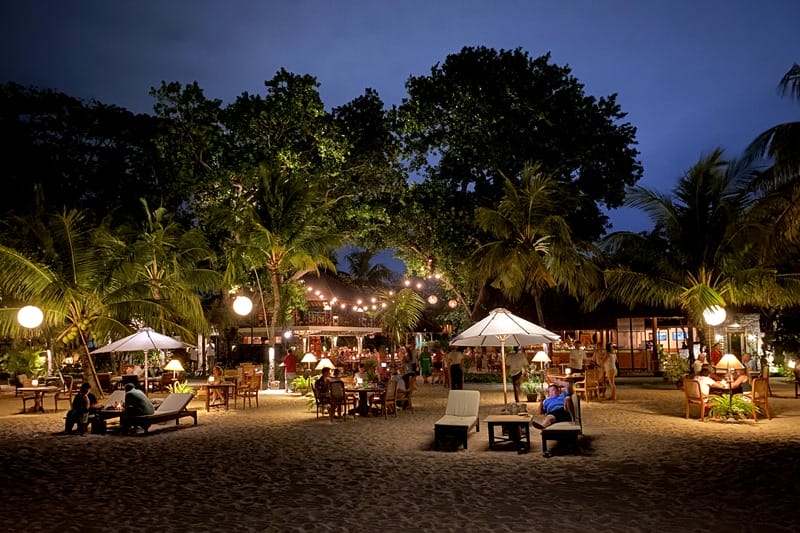
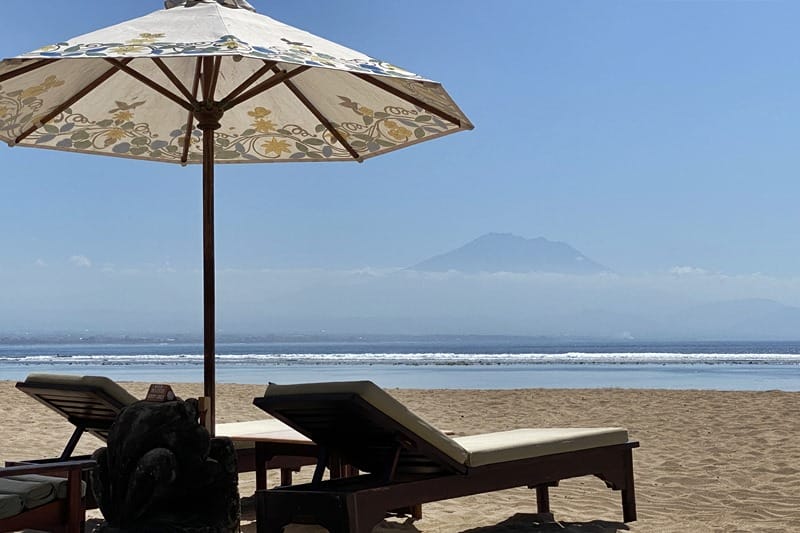
We stayed in Sanur and it took a little over 30 minutes by private car to get to Kuta Beach. We highly recommend booking your stay at Tandjung Sari, a family-owned boutique hotel in Sanur with a location that can’t be beat, stunning spacious rooms and a private beach area. Check the rates and availability at Tandjung Sari.
You may also want to consider Maya Sanur (a luxury beachfront hotel in Sanur with a fantastic pool and oceanfront restaurant and bar), Andaz Bali (a high end peaceful resort with modern and sleek rooms, perfect for couples) or Hyatt Regency Bali (a family-friendly resort in Sanur with excellent facilities).
If you are staying in Canggu, the drive to Kuta will take anywhere from 45 minutes (if you are staying near Berawa) to an hour and a half (if you are staying further north near Pererenan).


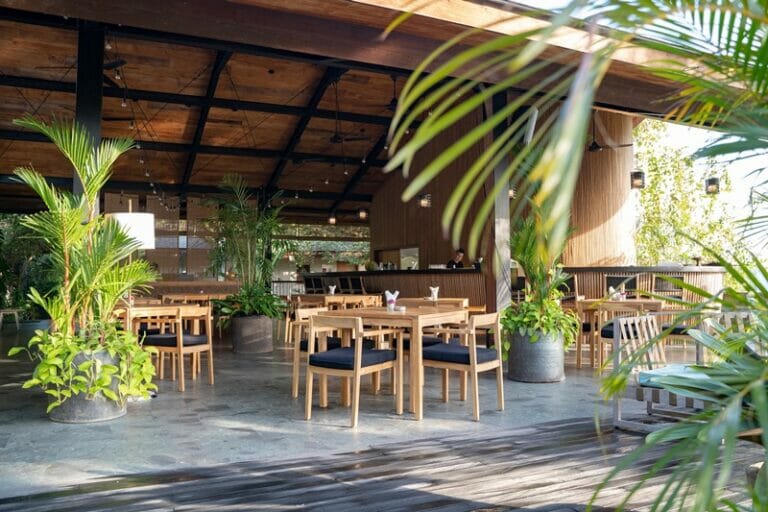

We loved our stay at MASMARA Resort in Pererenan, Canggu. The rooms at this Canggu boutique hotel are spacious and the staff are incredibly warm and helpful. It is just a 2-minute walk from Pererenan beach (a black sand beach).



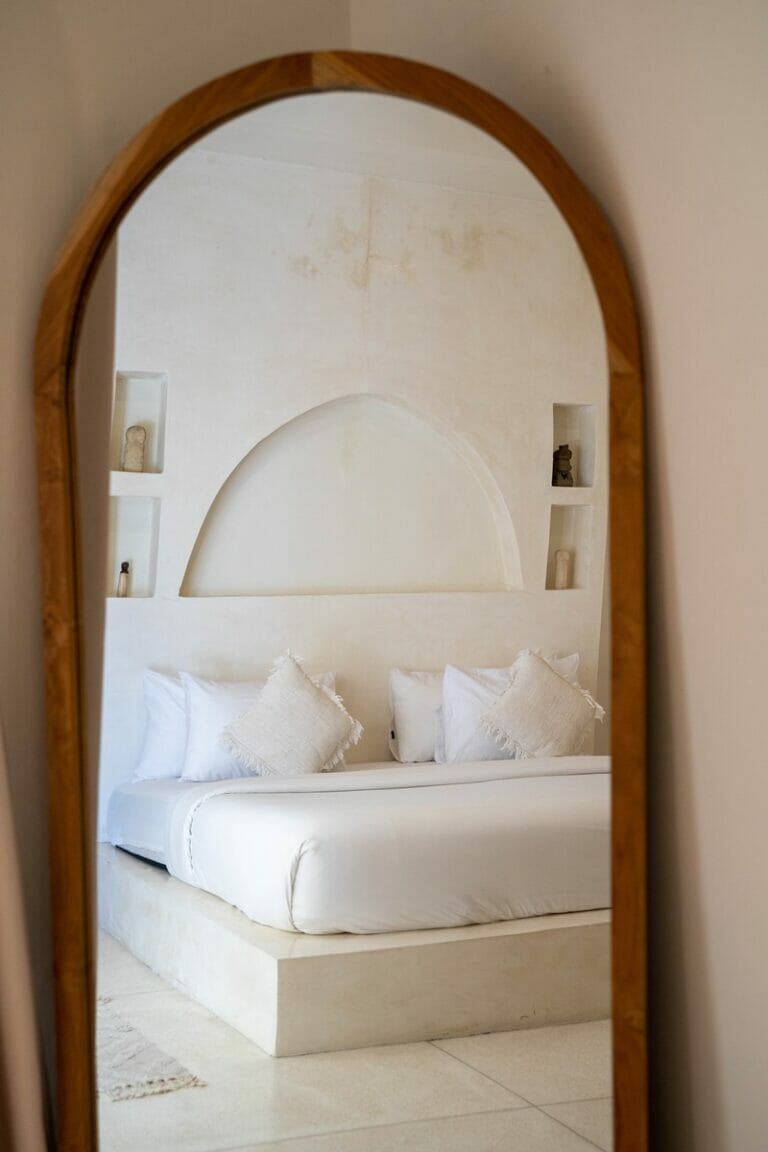
Alternatively, check the rates and availability at Casa Gypsy up the road from MASMARA. This 2-bedroom villa offers you a private pool, open-air pavilion lounge and kitchen area. We loved the airy, light-filled space and the privacy it offered.
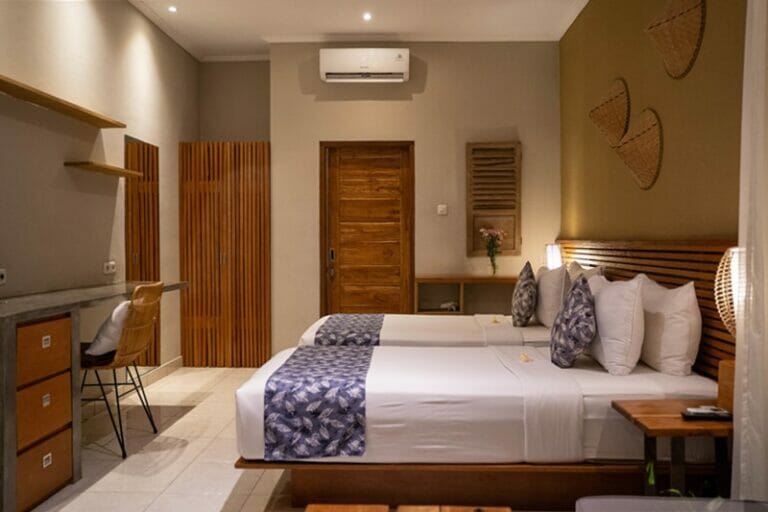
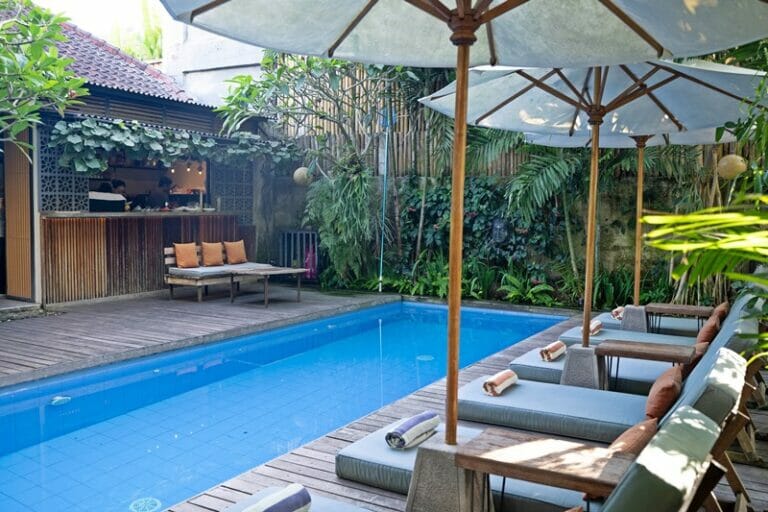


For those considering other areas in Canggu I recommend checking rates and availability at Pangkung Sari, a small and cozy boutique B&B overlooking a small rice field in Berawa. This is best suited to solo travelers or couples, as well as families traveling with older kids/teens.
Looking for even more options for where to stay in Canggu? Other accommodation options in Canggu that we considered based on extensive research include The Bed By the Sea (an adults-only small hotel within walking distance to Echo Beach) and ZIN Canggu Resort & Villas (stunning rooms a stone’s throw from the busy Batu Bolong main road).
You may also enjoy these reads:
- Planning a trip to Bali can be overwhelming. Here is my easy 2 week Bali itinerary for first time visitors
- Canggu is another popular beach destination in Bali. Read this for my Canggu travel guide
- Headed to Ubud? Here are the best things to do in Ubud, Bali’s cultural capital
- Venturing to the Bukit Peninsula? You’ll want to read this guide on the best things to do in Uluwatu
- Looking for a quiet beach destination in Bali? You might want to consider staying in Sanur
- If you plan on spending time in the northern mountain region of Bali here is my guide to the best things to do in Munduk and Bedugul
Liked this post? Pin it for later!

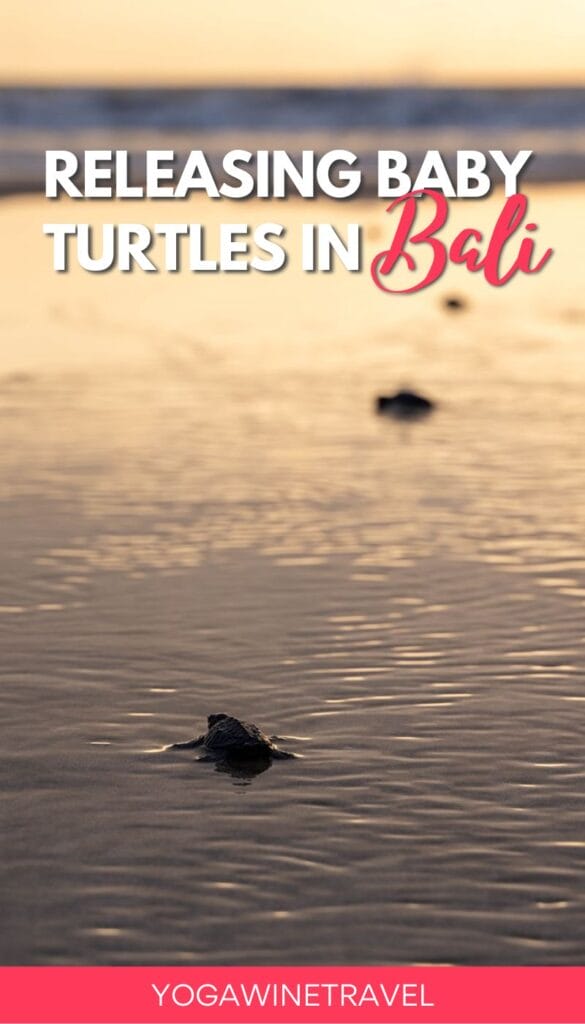
This article contains affiliate links. If you choose to book using these links, I will earn a small commission at no extra cost to you. Thank you for supporting my website by using these links.
Enjoyed reading this article? Subscribe to the mailing list!
* Unsubscribe at any time. Your e-mail address will only ever be used to send the occasional Yoga, Wine & Travel newsletter.



